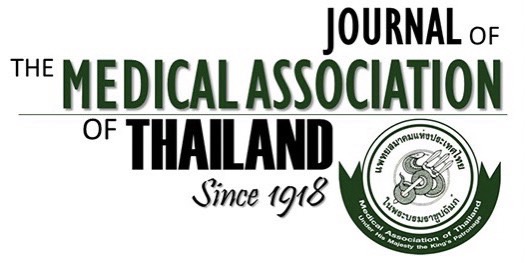Three-Tesla MRI Diagnosis of Meniscal Tears of the Knee
Suphaneewan Jaovisidha MD*, Warapat Virayavanich MD*, Patarawan Woratanarat MD**, Pimjai Siriwongpairat MD*
Affiliation : * Department of Radiology, Ramathibodi Hospital School of Medicine, Mahidol University, Bangkok, Thailand ** Department of Orthopedics, Ramathibodi Hospital School of Medicine, Mahidol University, Bangkok, Thailand
Objective : To study and diagnose meniscal tear of the knee using 3-Tesla (3-T) magnetic resonance imaging
(MRI) compared with arthroscopy
Material and Method: One hundred twenty eight consecutive patients who underwent MRI of the knee using
a 3-T magnet between April 2007 and Nov 2008 were included in this study. The inclusion criteria were the
patients who had (i) subsequent knee arthroscopy, (ii) available medical records, and (iii) no history
of meniscal surgery. Their MR images were retrospectively reviewed by two radiologists with consensus
agreement. The diagnostic values for diagnosing meniscal tears were evaluated and compared to the
arthroscopic results
Results : Thirty-two patients (64 menisci) were included; 26 males and 6 females, mean age was 36.4 years
(range 19-62). The mean interval between MRI and arthroscopy was 93 days. To diagnose tear of medial,
lateral, and both menisci; the sensitivity was 100%, 90%, 100%; the specificity was 77%, 73%, 50%;
the accuracy was 91%, 78%, 84%; the positive predictive value (PPV) was 86%, 60%, 81%; and the
negative predictive value (NPV) was 100%, 94%, 100%, respectively. False positive MR findings were found
predominantly at the posterior horn and at the peripheral third of the menisci. By dividing the patients into 2
groups according to the mean MRI-arthroscopy interval (< 93 and > 93 days): increased sensitivity and
NPV of detecting lateral meniscal tear; increased specificity, accuracy, and PPV of both meniscal tear was
observed in the longer duration group, but there was no statistical significance in the present study
Conclusion : The present results with 3-T MRI revealed high sensitivity and NPV comparable to the literature,
thus supporting previous studies that if a meniscal tear is not seen on 3-T MRI, it is highly unlikely to be
present. False positive MR findings found predominantly at the posterior horn and at the peripheral third of
the menisci. The longer the MRI-arthroscopy interval yielded increased diagnosing values of meniscal tear
but there is no statistical significance in the present study.
Keywords : Knee, Arthroscopy, Meniscus, Meniscal tear, MRI, 3-Tesla, Sports medicine, Trauma



